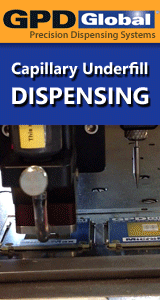Printed Circuit Board Assembly & PCB Design Forum
SMT electronics assembly manufacturing forum.
- SMTnet
- »
- Electronics Forum
- »
- Cracked Capacitors
Cracked Capacitors
Views: 5354
![]() Has anyone ever looked into the possibility for laser markin...
- Oct 31, 2007
by
Glen
Has anyone ever looked into the possibility for laser markin...
- Oct 31, 2007
by
Glen
![]()
![]()
![]() We wouldn't expect the ceramic of the capacitor to conduct v...
- Oct 31, 2007
by
davef
We wouldn't expect the ceramic of the capacitor to conduct v...
- Oct 31, 2007
by
davef
![]()
![]()
![]() We've not performed any incoming electrical testing on these...
- Nov 01, 2007
by
Glen
We've not performed any incoming electrical testing on these...
- Nov 01, 2007
by
Glen
![]()
![]()
![]() Electrically testing components is an age-old practice of th...
- Nov 01, 2007
by
Dirk Nuendyke
Electrically testing components is an age-old practice of th...
- Nov 01, 2007
by
Dirk Nuendyke
![]()
![]()
![]() Glen
We do incoming inspection of parts and materials, if w...
- Nov 01, 2007
by
davef
Glen
We do incoming inspection of parts and materials, if w...
- Nov 01, 2007
by
davef
![]()
![]()
![]() > Has anyone ever looked into the possibility for
> ...
- Nov 02, 2007
by
floydf
> Has anyone ever looked into the possibility for
> ...
- Nov 02, 2007
by
floydf
![]()
- SMTnet
- »
- Electronics Forum
- »
- Cracked Capacitors







